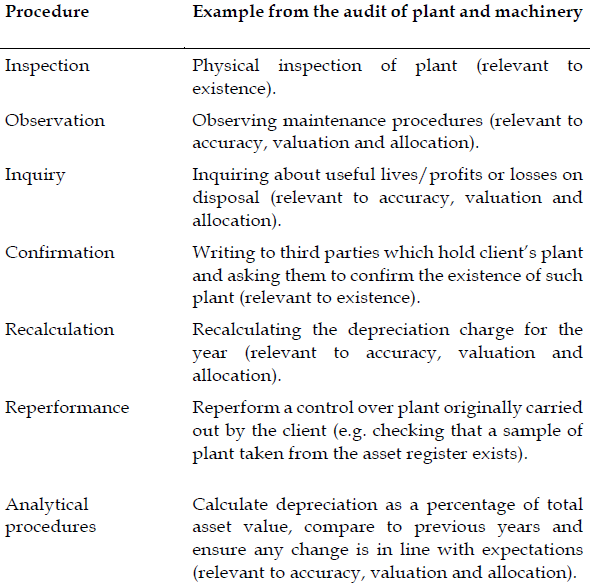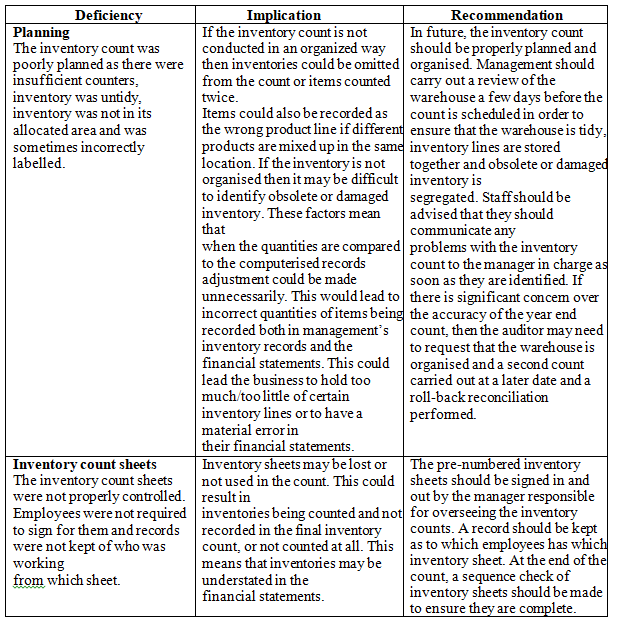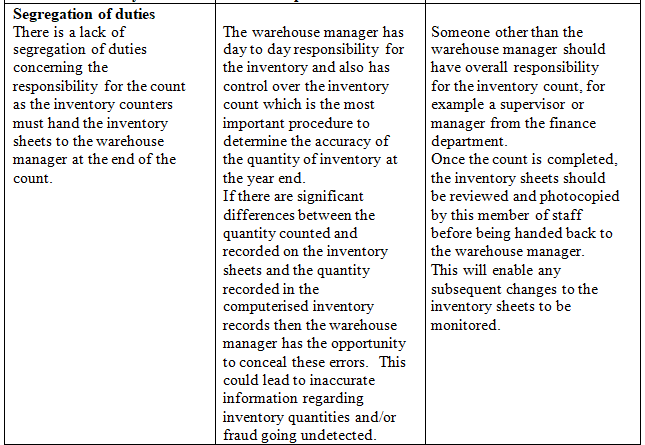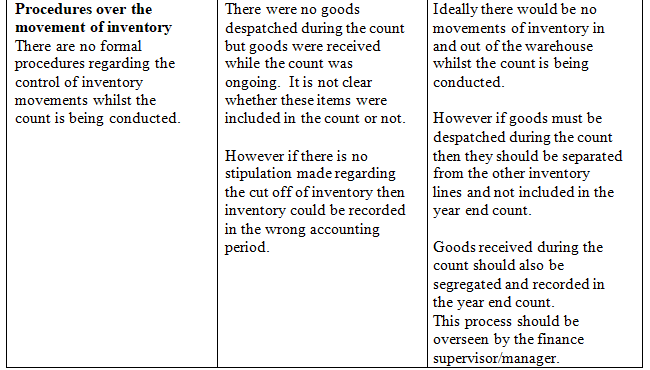May 2021 Q4 a.
Fafa Ltd operates a chain of food wholesalers across the Volta Region of Ghana, and its year-end was 30 September, 2019.
The final audit is nearly complete, and it is proposed that the financial statements and audit report will be signed on 13 December, 2019. Revenue for the year is GHS 79 million, and profit before taxation is GHS 8.5 million. The following event occurred after the year-end.
Receivable
A customer of Fafa Ltd has been experiencing cash flow problems, and its year-end balance is GHS 0.8 million. The company has just become aware that its customer is experiencing significant going concern difficulties. Fafa Ltd believes that as the company has been trading for many years, they will receive some, if not full, payment from the customer, hence they have not adjusted the receivable balance.
Required:
For the event above:
i) Discuss whether the financial statements require amendment. (1 marks)
View Solution
A customer, owing GH¢ 0.8 million at the year-end, is experiencing significant going concern difficulties. This information was received after the year-end but provided further evidence of the recoverability of the receivable balance at the year-end. However, under IAS 10 Events after the Reporting Period, if the customer is experiencing cash flow difficulties just a few months after the year-end, then it is highly unlikely that the GH¢ 0.8m was recoverable as of 30 September.
The receivables balance is overstated and consideration should be given to adjusting this balance, if material, through the use of an allowance for receivables or by being written off.
ii) Describe THREE (3) audit procedures that should be performed to form a conclusion on the amendment. (3 marks)
View Solution
The following audit procedures should be applied to form a conclusion as to the level of the adjustment:
- The correspondence with the customer should be reviewed to assess whether there is any likelihood of payment.
- Discuss with management as to why they feel an adjustment is not required.
- Review the post year-end period to see if any payments have been received from the customer.




